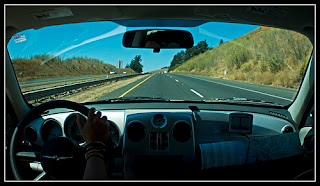Historic Reenactment not only
reinforces a sense of pride in our heritage; it is educational as well. Recent movies, such as “The Patriot” and “John Adams,” as
well as books about the founding fathers have caused interest in the
Revolutionary War period to mushroom. In response, a number of Revolutionary
War Reenactment groups have attempted to make themselves more family. Similarly,
the 200th anniversary of the War of 1812 and the 150th
Anniversary of the War Between the States have raised interest in those periods
as well.
Taking part in Living History is a
great way to escape the worries of today and "pretend" just as you
did when you were young. Best of all, it is something in which you and your family
can share the experience together. My wife and I have both been involved for
upwards of 20 years, and raised our daughter around living history sites and
reenactments since she was less than 2 years-old. With
a little effort, you and your family can enjoy experiencing the 1770's in the
American colonies, or other periods, but first there are a few decisions that
each of you will need to make.
When and Where?
The first
decision you need to make is, “what era am I interested in portraying?” You may
be tempted to say something like, “the 18th century,” but this will
not work out well. How can you possibly portray an entire century? Did people
in 1900 live, or dress, or speak, or have the same outlooks on life as people
living in 1999? Of course, they did not. The same is true if you try to portray
a shorter period that still spans several decades. Say you decide to portray
the latter half of the 18th century, covering the periods of the
French and Indian War (1755 – 1763) and the American Revolution (1774-1783).
The clothing in each of these periods, while similar, exhibits different
styles, different fits, and sometimes, different fabrics. Just as a someone
getting ready for a date in the year 2005 would not wear the hair styles and
clothing that were “in style” in 1980, neither would someone in 1783 wish to be
seen in clothing styled for the 1754. So, your decision comes down to, “Do you
want to live in the French & Indian War period (1754 – 1763), the American
Revolution (1774-1783), War of 1812/Regency (1811-1820), the War Between the States (1860-1865), or some other period?”
An additional consideration you need to take into account when deciding on an era to reenact is “Where do you live?” This will affect your decision in a number of ways.
First, is
your chosen period appropriate for where you live? This question is not about
did the people I want to portray live in my area, although that can sometimes
enter into the decision. For instance, there are some very good American
Revolutionary War groups located in California, even though in the 1770s, that
was a part of Spain. What we are trying to determine with this question is,
what is going to be the availability of venues for you to go to where your
persona is appropriate? You might decide, because of an ancestor, you want to
portray a Texan during the period when they were fighting to break away from
Mexico. Unfortunately, unless you are living within reasonable driving distance
of Texas, you are not very likely to find venues where your portrayal makes
sense.
I knew a
fellow who lived in southern Alabama who wanted to reenact as a 1750-1763
native warrior. There were, at that time, only a couple of venues, within
reasonable driving distance, for a persona in that period but he understood
that and was OK with it. The problem that occurred was that he insisted on
portraying a Mohawk warrior, a tribe that was located in the Hudson River Valley
of New York! The events he could attend were at F&I period French forts and
the Mohawks were allied with the English. To make matters worse, there is no
record of Mohawks ever being with the British that far south and west. As a
result, he was always a bit out of place and at a loss to explain what his
persona was doing there.
Other Considerations
Another
consideration is what living history groups, whether reenactment units or
historic site-affiliated, are within a reasonable driving distance. As I
discussed in a previous post, there are numerous advantages, especially to someone just
starting out, in being a part of a unit or group. Those of you who have read
the About Me
page on this blog know that I started out in living history as a volunteer
interpreter at a living history site. That experience, in terms of learning
interpretative skills, historical costuming, and methods for historical
research, did so much to accelerate my development as a living history
interpreter.
Finally,
you need to consider realistically how far you are willing to travel to take
part in the hobby. Be realistic about this because if you are getting into this
for the long haul, you will be driving to those for years. If there is only one
event per year within your driving range, or all events for the period you are
interested in are an eight-hour drive, then you probably need to reconsider the
era that you are deciding to portray.






No comments:
Post a Comment
Thanks for your comment. Rest assured that I value your opinion and read all comments.
Chuck H